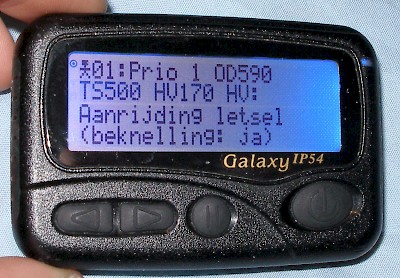Intro
FLEX , a wireless paging protocol, was introduced in the early 90's as an alternative and improvement to POCSAG. 
In the Netherlands, emergency services use 'P2000' pagers for alerting. P2000 is a FLEX-based network, with good coverage in most parts of the Netherlands. It transmits pages on 169,650Mhz Initially, the Dutch government decided unencrypted data transmission was good enough, but it soon turned out to be fairly easy to decode the messages. Many websites emerged, showing each and every message sent by the system. While the legality of these websites is debateable, it made it very easy for press to respond, and frequently photographers would appear at the site before the emergency services did. Dispatchers responded by omitting most private data from the callout messages; where messages to ambulances used to explain patient symptoms and other information, today the messages aren't much more than the address and type of transportation. In some districts, even the address itself is removed from the message, and only displayed in the emergency vehicle itself.
The government is now looking to replace the system by something new and encrypted. As with most government IT projects, the replacement system has been delayed extensively, and is now scheduled for deployment in 2018.
I decided it was worth taking a look at the existing system before it was decommisioned. A short appreciation of its capabilities, protocol, and use (in the Netherlands). I've also built a FLEX decoder, to decode the messages sent by this system.